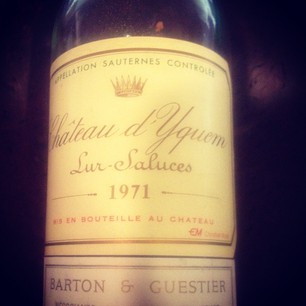My upcoming book Wine Sense describes what a wine stimulus error is and how to avoid them. A wine stimulus error occurs when conditions around us play a significant part in our assessing a wine’s taste and quality. This is especially true when our sense of sight is involved as it is so predominant over our gustatory senses of smell, taste, and feel. We are so confident in what we perceive through sight that it overrides what we experience through our other senses. Sometimes people selling wine intentionally create stimulus errors to entice us to purchase more or pay a higher price than we should. (This topic is discussed in detail in Wine Sense, Chapter 17: Buying and Storing Wine.) Typical visual stimulus errors you should be aware of and consciously avoid include:
- Assessing wine sealed with cork as being better than wine sealed with screw cap
- Assessing wine in a box being worse than wine in a bottle
- Viewing a fancy or imported label as containing better wine than those with simple label
- Being tricked to believe white wine with red wine dye tastes like red wine
- Dark, aesthetic settings (cellar door tasting rooms) for tasting wine we are considering buying increases our perception of higher quality wine
- Providing leniency and over-rating a wine when we are in the presence of the winemaker, other winery staff or so-called ‘experts’ who are proclaiming the wine excellent when it is not
Up until about five years ago, these last two points above have caused me to buy wine or overpay for wine which did not taste nearly as good when I opened a bottle under different circumstances a few months later. I had been deceived by the surrounding ambiance and ‘expertise’ of those with me. While conducting research for this book, I was surprised how much research I found on designing wine labels. This is an extremely large field of study and there appears to be more courses on wine label design than there are on wine making and vineyard management. The industry knows how important wine label design is on wine sales and they work hard at getting labels right. Some people cannot bring themselves to drinking a cleanskin wine (bottle of wine without a label affixed) even if they have confidence they know what wine is in the bottle. They have a preconceived notion that cleanskins are made from low quality grapes (otherwise, why would it be a cleanskin?). I know people who have dismissed extremely fine wines out of refusal to drink anything without a label affixed to it even when the provenance supports the wine in the bottle to be of high quality.
Is the wine in the glass in the photo above any better because it is being served by some good looking dude in a fancy jacket in the vineyard? No, but you probably will taste it and think it is better than it really is! With more experience and practice, you develop more confidence and can avoid getting caught out by wine stimulus errors. Have confidence in what you are tasting, not what the label, the color of the wine or those around you are saying!
Steve Shipley, author Wine Sense, out early 2014. Published by InkIT Publishing
© 2014. Steve Shipley. All rights reserved.
SAZ in the Cellar on Facebook
Wine Pinterest Boards
Twitter: Steve Shipley @shipleyaust; InkIT Publishing @inkitpub








